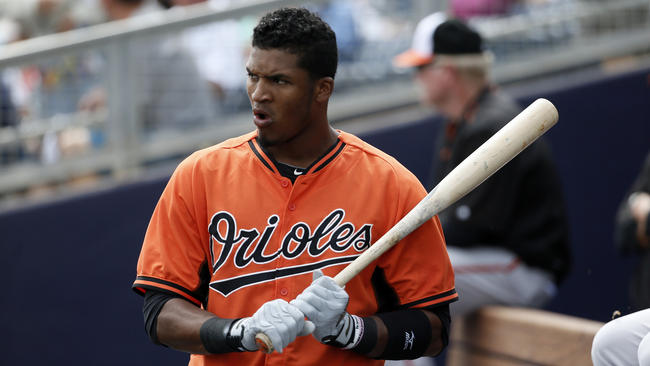Jimmy Paredes has finally forced me into writing this article. Each time I’ve thought about writing about him up until now, I’ve thought, “Nah, he’s going to regress eventually and the article is going to be useless in another week or two.” I think we’re at the point now though where he has just been too good for too long and it’s time to see what’s going on.
You win, Jimmy.
As a player with a limited major league resume prior to 2015 and a very high batting average on balls in play, the logical place to start is Parades’ .394 BABIP. That’s really high, obviously, and probably not sustainable. But BABIP doesn’t just level out for all hitters across the majors; it depends at least partially on what type of contact is being made by the batter.
Dee Gordon currently leads the league among qualifiers in BABIP at .411 while making hard contact on only 18% of the balls he hits. He’s also one of the fastest players in the league, so he can beat out a lot of these infield singles for hits. On the other end of the spectrum is Paul Goldschmidt, number two in BABIP at .396. Goldschmidt is making hard contact on 43% of balls and has an excellent HR/FB of 25.3%. If he’s hitting the ball, he’s going to hit it hard and as a result, he’ll bat for a higher average on balls in play.
Then there’s Jimmy at number three in BABIP. So where is he on the Dee-Goldy scale? While his power does not approach Goldschmidt, he’s still doing pretty good at hitting for power. His 21.3% HR/FB mark is above the threshold that FanGraphs describes as “Excellent”. In fact, he currently checks in at #16 in the MLB in the category and is surrounded by some pretty big bats:
His overall ISO isn’t quite as elite, but at .201, still ranks inside the top 40 within the category. Paredes hasn’t shown off his speed too much in the majors so far (seven steals over 86 games from 2014-2015), but he has put up some pretty nice SB numbers in the minors as recently as 2014, where he stole 17 in 65 games. A player who can hit the ball hard while having above average speed is the recipe for sustaining a high BABIP – just ask Yasiel Puig. And while .394 is an awfully high number to maintain, I’m not expecting him to all of a sudden fall off the map, either.
As a relatively unknown commodity that burst onto the scene this year, you would expect that Paredes spent most of the early season underpriced. As a result, his Plus/Minus on the season should be very good, and it is. That’s not hugely helpful because you can’t buy Jimmy for $3400 on DraftKings these days. Adding a filter of “Salary is at least $4200,” though, shows that Jimmy has still turned a profit this season even when priced at a higher salary level, with a +1.43 Plus/Minus in this result.
Another thing that Paredes has going for him is the fact that he has settled into the number two slot in the Orioles batting order recently. Over the past two seasons, quite a few players have hit in this position, and it’s been a very good spot for adding value:
Any time a 26-year-old who has spent a long time in the minors is among the league leaders over the first part of the season, there is reason to be skeptical. In my research for this article, I came across an Orioles blog that had an “Is Jimmy Paredes For Real?” article posted as early in the season as May 12th. At some point, we have to stop waiting for the other shoe to drop, and I’m getting to that point with Jimmy Paredes.




